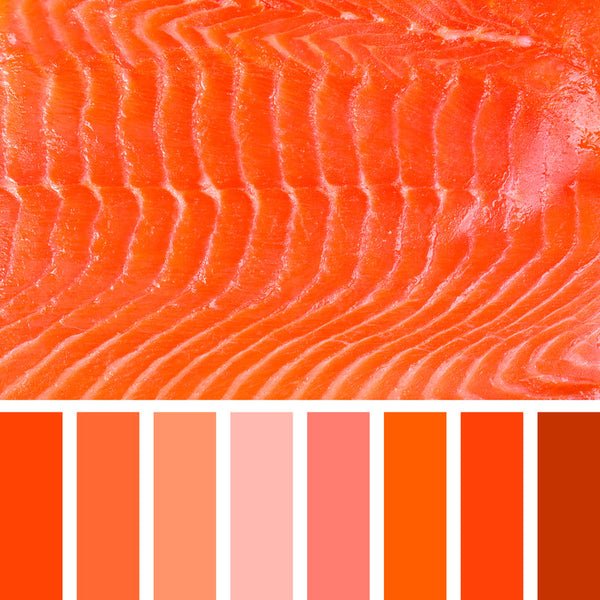Sockeye Salmon in British Columbia vs. Bristol Bay
Sockeye salmon (Oncorhynchus nerka), the vibrant red icon of the Pacific Northwest, play a vital ecological and economic role in British Columbia (BC) and Bristol Bay, Alaska. These two regions host some of the largest sockeye salmon populations in the world, yet environmental conditions and conservation practices create notable differences in their behavior, habitat, and population dynamics.
Discover premium-quality sockeye salmon and other sustainably sourced seafood at Global Seafoods. For expert insights, visit our YouTube channel.
Introduction: Sockeye Salmon in Two Iconic Regions
British Columbia and Bristol Bay are home to some of the world’s most significant sockeye salmon populations. Despite being the same species, the differences in habitat, behavior, and environmental challenges between these regions create unique dynamics that impact both salmon and the people who rely on them.
“Sockeye salmon are a cornerstone species, bridging ecosystems and supporting life from rivers to oceans,” notes the Wild Salmon Center.
Shop sustainably sourced Sockeye Salmon Fillets and explore our Salmon Collection at Global Seafoods.
Habitat Comparison: British Columbia vs. Bristol Bay
1. Freshwater Habitat Differences
British Columbia (BC)
- Key Rivers: The Fraser River, Skeena River, and Adams River are crucial habitats for sockeye salmon.
- Challenges: BC salmon habitats are impacted by dams, logging, and urban development, which reduce spawning areas.
- Water Temperatures: Warmer waters in BC rivers can stress salmon during migration.
Bristol Bay, Alaska
- Key Rivers: Bristol Bay rivers, including the Kvichak, Naknek, and Nushagak, host the world’s largest sockeye salmon runs.
- Pristine Conditions: Bristol Bay’s relatively untouched ecosystems ensure optimal spawning and rearing conditions.
- Water Temperatures: Cold, oxygen-rich waters create a perfect environment for salmon reproduction.
Key Insight
Bristol Bay’s pristine rivers provide unmatched spawning conditions, while BC sockeye face more human-induced challenges.
2. Marine Habitat Similarities
Both BC and Bristol Bay sockeye salmon migrate to the North Pacific Ocean to feed and mature.
Shared Marine Traits
- Diet: Zooplankton, krill, and small fish are essential to their growth, giving them their vibrant red color.
- Migration Routes: Both populations travel thousands of miles, overlapping in key feeding grounds like the Bering Sea.
Explore Related Products
- Silver Salmon
- Chum Salmon
Behavioral Differences: Timing and Migration
1. Migration Timing
BC Sockeye Salmon
- Timing: Runs occur between late June and September, with peak activity depending on the river system.
- Special Event: The Adams River sockeye run, occurring every four years, is one of BC’s most spectacular natural phenomena.
Bristol Bay Sockeye Salmon
- Timing: Bristol Bay’s runs are more concentrated, peaking from mid-June to July.
- Efficiency: Shorter migration periods lead to less energy expenditure compared to BC sockeye.
2. Spawning Behavior
BC Sockeye Salmon
- Face long migrations from ocean feeding grounds to freshwater spawning areas, requiring significant energy reserves.
- Warmer water temperatures can increase stress and mortality rates.
Bristol Bay Sockeye Salmon
- Benefit from shorter migration distances, allowing more energy for reproduction.
- Cooler water temperatures reduce stress and boost spawning success.
Population Dynamics
1. Size and Stability of Salmon Runs
British Columbia
- The Fraser River sees annual returns of millions of sockeye, but populations fluctuate due to environmental pressures.
- Exceptional years, like 2010’s record-breaking run of 30 million salmon, are rare.
Bristol Bay
- Home to the world’s largest sockeye salmon runs, averaging 40–60 million fish annually.
- Strong conservation practices maintain high, stable populations.
2. Impact of Human Activity
BC Sockeye Salmon
- Habitat destruction from hydroelectric dams, urban sprawl, and climate change affects population levels.
- Conservation efforts are ongoing but face significant hurdles.
Bristol Bay Sockeye Salmon
- Protected by robust regulations and local opposition to industrial projects like the Pebble Mine.
- The region’s commitment to preservation supports healthy ecosystems and fisheries.
Cultural and Economic Importance
British Columbia
- Indigenous communities have relied on sockeye salmon for thousands of years for food, cultural practices, and trade.
- Sockeye salmon are a cornerstone of BC’s commercial and recreational fishing industries.
Bristol Bay
- The Bristol Bay sockeye fishery contributes over $2 billion annually to the global seafood market.
- Local communities rely on the fishery for employment, food, and cultural traditions.
Explore premium products like Coho Salmon Caviar and Salmon Belly Strips.
FAQs About Sockeye Salmon in BC and Bristol Bay
1. Why are Bristol Bay sockeye salmon runs larger than those in BC?
Pristine habitats and effective conservation in Bristol Bay support larger and more consistent populations.
2. What makes BC sockeye salmon unique?
Their long migrations and iconic events, like the Adams River run, distinguish them from Bristol Bay salmon.
3. How does climate change affect sockeye salmon?
Rising water temperatures and habitat changes can increase stress and reduce spawning success, particularly in BC.
4. Can BC and Bristol Bay sockeye salmon intermix?
Yes, both populations share feeding grounds in the North Pacific, but they spawn in their respective natal rivers.
5. How can I support sustainable sockeye salmon fisheries?
Purchase responsibly sourced products from Global Seafoods to support sustainable practices.
6. Where can I learn more about sockeye salmon?
Visit our YouTube channel for educational content.
Conclusion: BC vs. Bristol Bay Sockeye Salmon
Sockeye salmon in British Columbia and Bristol Bay demonstrate the resilience and diversity of this incredible species. While BC salmon face more challenges from habitat loss and climate change, Bristol Bay remains a model for conservation and sustainability. Both regions highlight the importance of protecting sockeye salmon for the ecosystems, cultures, and economies they sustain.
Shop sustainably harvested sockeye salmon at Global Seafoods. For videos on seafood and sustainability, visit our YouTube channel.
Would you like further refinements or additional content on related topics? Let me know!



